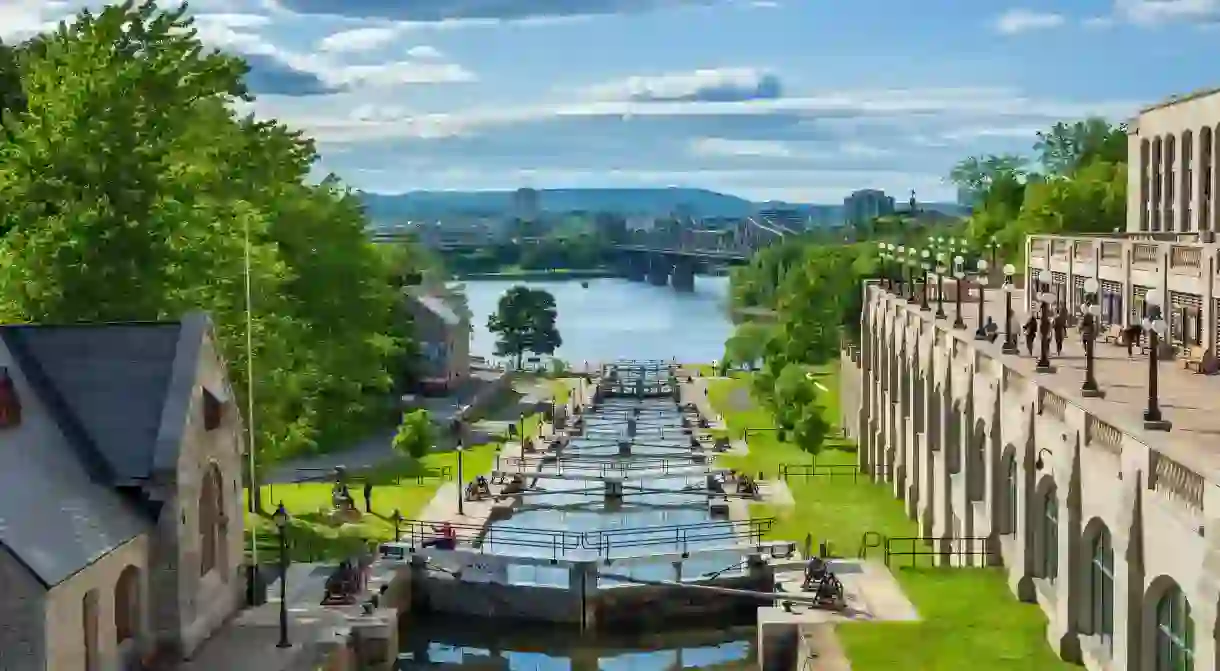The Most Photogenic Spots in Canada

Canada is the world’s second biggest country in terms of size, so it’s fair to say there’s a lot of beautiful places across its vast land. Some of them are big names, like Niagara Falls and the Rocky Mountains, while others are a little more underrated. From national parks to cities to buildings, here are 17 of the most photogenic spots in Canada.
Did you know – Culture Trip now does bookable, small-group trips? Pick from authentic, immersive Epic Trips, compact and action-packed Mini Trips and sparkling, expansive Sailing Trips.
Lunenburg

The small Nova Scotian port town of Lunenburg, and its waterfront Old Town, is unique as it’s one of only two North American urban communities designated as a UNESCO World Heritage Site. Seventy percent of the Old Town’s colorful colonial buildings are still standing from the 18th and 19th centuries.
Moraine Lake

Although the entirety of Banff National Park is photogenic, Moraine Lake is one must-see spot. Like its next-door neighbor, Lake Louise, Moraine Lake is a turquoise, glacial-fed lake surrounded by the Canadian Rockies. It’s located in the Valley of Ten Peaks.
Yellowknife

Yellowknife is a photogenic spot because it’s the world’s best place to see the Northern Lights, which is due to the city’s access to dark skies, flat landscape, and proximity to the North Magnetic Pole. The best time to visit for this photo opportunity is mid-November to April.
Torngat Mountains
The Torngat Mountains in Newfoundland and Labrador are the highest mountains in Canada east of the Rockies. The national park’s landscape is unique as the rugged peaks slope into the coastline, making for breathtaking photos.
BC Legislature Building

Surrounded by manicured lawns, fountains and statues on Victoria’s Inner Harbour, the BC Legislature Building is of Richardsonian Romanesque architecture. Illuminated with electric lighting for Queen Victoria’s Diamond Jubilee in 1897, the building’s silhouette continues to glow every night.
Niagara Falls

On the border between Canada and the United States, Niagara Falls is one of the country’s top attractions. From the Canadian side, visitors have access to the three sets of falls, including the most powerful and expansive, Horseshoe Falls. Waterfalls are usually photogenic, but Niagara Falls takes this to another level.
Old Quebec

Built in the 17th century, this fortified French colonial city is a UNESCO World Heritage Site. The Upper Town is home to churches, the Citadel, Place Royale, and the world’s most photographed hotel, Fairmont Le Château Frontenac. Old Quebec personifies European charm and is the only walled city north of Mexico.
St.John’s
The rainbow of colors painted on St. John’s houses and businesses definitely sets the city apart from the rest of Canada. Collectively known as Jellybean Row, a popular place for photographing the colored houses is in Outer Battery Village, a coastal neighborhood with houses grouped together on a hill.
Stanley Park
A 405-hectare urban park located in downtown Vancouver, Stanley Park has many incredible viewpoints. Follow the nine-kilometer (5.6-mile) seawall around the park and capture photos of the Coal Harbour skyscrapers, Lion’s Gate Bridge, North Vancouver skyline, Siwash Rock, and Second and Third Beaches.
The Bear’s Hump
For the best view of one of Canada’s most beautiful national parks at Waterton Lakes, head up the short but strenuous hike to Bear’s Hump. The panoramic vista includes Waterton Valley, Mount Cleveland, and Middle and Lower Waterton Lakes. From Bear’s Hump, hikers will understand why Waterton is described as “where the mountains meet the prairies.”
Mount Thor

Auyuittuq National Park, located on Baffin Island in Nunavut’s Arctic region, features a landscape with fjords, glaciers, icefields, and granite monoliths like Mount Thor. At an elevation of 1,675 meters (5,495 feet), Mount Thor also has the world’s greatest vertical drop at 1,250 meters (4,101 feet). Although the national park is extremely remote, adventurers still visit to rock climb Mount Thor.
Fogo Island

Fogo Island is the largest offshore island in Newfoundland and Labrador, and the Flat Earth Society says it’s one of the four corners of Earth. The architecturally intriguing Fogo Island Inn is undoubtedly the island’s most photogenic spot, but its forested and rocky landscape is just as remarkable.
Toronto Skyline

For the best Toronto skyline view and photo, catch the ferry to the Toronto Islands. From here, visitors can capture the skyline in all its glory, including the all-important CN Tower. The 533-meter-high (1,748.7-foot-high) tower held the record for the world’s tallest freestanding structure for an incredible 34 years, until Dubai’s Burj Khalifa overtook it in 2007.
Rideau Canal

The Rideau Canal looks just as good in winter as it does in summer. The UNESCO World Heritage Site in Ottawa, constructed in the late 19th century, winds through the downtown area, before reaching a series of locks and the Ottawa River beside Parliament Hill. In winter, part of the canal is transformed into a world-renowned ice skating rink.
Western Brook Pond

Located in Newfoundland and Labrador, Gros Morne National Park is a UNESCO World Heritage Site. Its landscape includes coastline trails, barren desert, and Western Brook Pond. The pond is a freshwater fjord carved out by glaciers during the ice age 25,000 to 10,000 years ago. Its water is extremely pure.
Roberts Creek
Although any town on British Columbia’s Sunshine Coast is a photo-worthy spot, Roberts Creek is perfectly positioned in the middle. Roberts Creek Provincial Park offers excellent oceanside views from the cobblestone beach, piled with driftwood.













